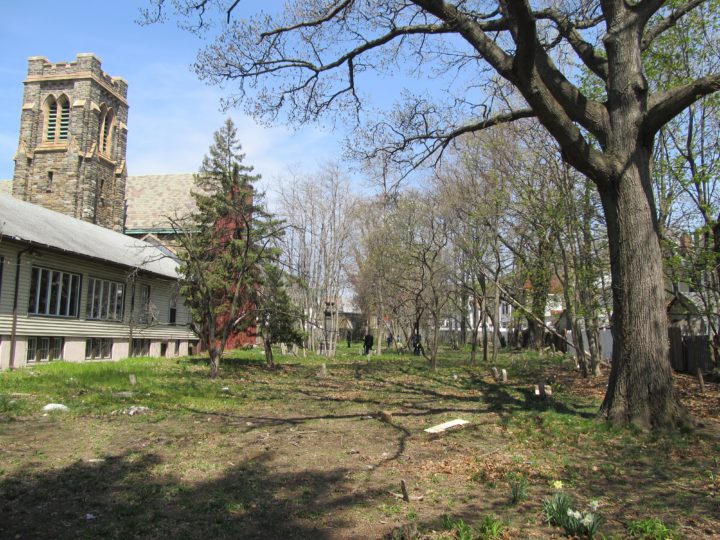Much has been written about Woodhaven’s historic cemetery on 96th Street and 86th Avenue which serves as the final resting place of many the community’s founding families. But not enough has been written about the interesting history of All Saints Episcopal Church, which the historic cemetery sits behind.
Most people assume that their histories are tied together, but the fact is that apart from rescuing the cemetery by purchasing it for $600 back in 1963, the church and the cemetery are wholly unrelated.
For starters, the settlers buried in the cemetery were Dutch and many of them founded a local Presbyterian church while the church that was built next to the cemetery was English and Episcopal.
Let’s go back to the beginning: the Dutch settlers of Southern Queens used to drive their carriages all the way to the New Lots Reformed Church in Brooklyn, which is where they also used to bury their loved ones. But that was quite a hike in those days, so in 1785 the Wyckoff and Snedicker families combined to deed an 80 by 266 foot plot of land on the border of their respective farms to be used as a burial ground. Between 1791 and 1900 over 200 members of Woodhaven’s founding families were buried here.
It was just as the cemetery was ceasing to be active that St. Matthew’s was first organized as a mission of the Church of the Resurrection. They rented a storefront on Jamaica Avenue near 91st Street, where a jewelry store now sits, right next to the Avenue Diner, where the Woodhaven Cultural & Historical Society meets on the first Tuesday evening of every month at 7 p.m.
The first service was held on Jan. 7, 1900, but they would soon outgrow their little storefront church. In October of that same year, the church purchased land on Willard Avenue (now 96th Street) for the erection of a small wooden church in the middle of a field heavily populated with daisies. In fact, the land was so well-known for the flower that for years, the church was known to locals as “The Church in the Daisy Field.”
Now this is an important point to remember: the church was built next to the inactive cemetery, but it had no relation to it whatsoever.
On the other side of the cemetery was the farm of the Napier family, from Glasgow, Scotland. The farm sat on 98th Street reaching from Jamaica Avenue all the way to Park Lane South. The house was a showplace, set back from Jamaica Avenue, fronted by a white picket fence, and the farm also had a large barn. Mr. Charles Napier was a breeder of thoroughbred horses and they had the run of the large pasture at the rear of the property.
The Napiers were also members of St. Matthew’s and during the winter, the Napiers very kindly sent a man with a horse and snowplow through the Brooklyn Manor section of Woodhaven to keep lanes open so the residents could get to church.
Mr. Napier and his sister, Miss Kate, also made a generous donation in 1907 to St. Matthew’s in order to erect the Parish Hall, which stands to this day.
Though the wooden church was lovely, they soon outgrew it and so the cornerstone for a modern church was laid almost 90 years ago, on November 26, 1927 and that’s the church that stands to this day. It is constructed in rural English Gothic style with a square bell tower.
Though it was a vital part of Woodhaven for decades, attendance declined and the Episcopal Diocese of Long Island closed St. Matthew’s doors and deconsecrated it in 2011. The community was concerned about what would happen to the church and the cemetery, but the Diocese soon reopened the church under the leadership of the Rev. Dr. Norman Whitmire, Jr. and under a new name: All Saints Episcopal Church.
The cemetery had been neglected for many years and one of Rev. Whitmire’s first acts was to reach out to the Woodhaven Cultural & Historical Society for help. Over the past three years the fortunes of the church and the cemetery have turned and both are currently thriving for the first time in many years.




































